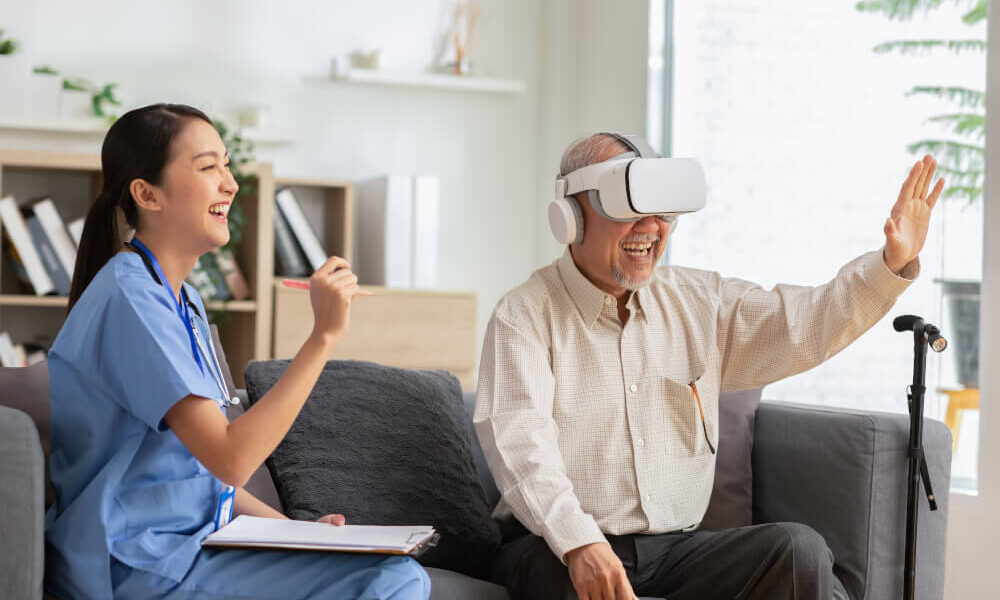Mobility aids encompass a wide array of devices and equipment designed to assist individuals with mobility challenges in navigating their daily lives. These aids are invaluable tools that help bridge the gap between physical limitations and the desire for independence. The primary purpose of mobility aids is to enhance mobility, restore a sense of self-reliance, and improve overall quality of life.
There is no one-size-fits-all definition of mobility aids because they come in various forms, each catering to specific needs and levels of mobility. These aids can be as simple as a walking cane or as advanced as motorised wheelchairs. The common thread among all mobility aids is their commitment to empowering individuals, regardless of their physical condition.
Table of Contents
Who Can Benefit from Mobility Aids?
Seniors:
Aging often brings about mobility challenges due to conditions such as arthritis, osteoporosis, or general muscle weakness. Mobility aids can greatly benefit seniors by providing stability and support, allowing them to maintain their independence and stay active.
Individuals with Disabilities:
People with disabilities, whether congenital or acquired, often rely on mobility aids to perform daily tasks and engage in social activities. These aids can range from manual wheelchairs to assistive technology devices tailored to specific needs.
Recovering Patients:
After surgery, injury, or illness, individuals may experience temporary or long-term mobility issues. Mobility aids offer a critical bridge to recovery, aiding in rehabilitation and restoring confidence.
Those with Chronic Conditions:
Conditions like multiple sclerosis, cerebral palsy, or muscular dystrophy can cause ongoing mobility challenges. Mobility aids are essential tools for managing these conditions and improving the overall quality of life.
Invisible Disabilities:
Not all mobility challenges are visible. Conditions like chronic pain or fatigue can significantly impact a person’s ability to walk or stand for extended periods. Mobility aids, such as lightweight rollators, can provide much-needed support.
Caregivers:
Caregivers play a crucial role in assisting individuals with mobility issues. Mobility aids can also benefit caregivers by reducing the physical strain of providing support.

Benefits of Using Mobility Aids
Enhanced Independence:
Mobility aids empower individuals to regain control over their lives. They enable users to move about freely, perform daily tasks, and participate in social activities without the constant need for assistance.
Improved Safety:
One of the primary benefits of mobility aids is enhanced safety. These devices provide stability and reduce the risk of falls, which is particularly crucial for seniors and those with balance issues.
Pain Reduction:
Mobility aids can alleviate physical strain and discomfort by redistributing weight and reducing the pressure on joints. This can help manage pain associated with conditions like arthritis or back problems.
Rehabilitation and Recovery:
Mobility aids play a vital role in rehabilitation, allowing individuals to regain strength and mobility after injuries or surgeries. They facilitate a smoother transition from hospital to home life.
Social Engagement:
Maintaining an active social life is essential for mental and emotional well-being. Mobility aids enable users to participate in social activities, maintain relationships, and avoid isolation.
Improved Quality of Life:
Ultimately, the use of mobility aids contributes to an improved overall quality of life. They empower individuals to lead more fulfilling lives, pursue their passions, and continue doing the things they love.
Choosing the Right Mobility Aid
Selecting the appropriate mobility aid is a crucial step in ensuring that individuals receive the right level of support for their unique needs. Here are some factors to consider when making this important decision:
Assessing Individual Needs:
Start by evaluating the specific challenges and limitations faced by the individual. Consider factors such as mobility level, strength, balance, and endurance. Understanding these needs will help in choosing the most suitable mobility aid.
Consulting Healthcare Professionals:
Medical professionals, such as doctors, physical therapists, and occupational therapists, can provide valuable insights and recommendations based on their expertise. They can assess the user’s physical condition and recommend the most appropriate mobility aid.
Considering Lifestyle and Activities:
Think about the individual’s daily routine and the activities they wish to engage in. For example, someone who enjoys outdoor activities may benefit from a mobility scooter, while a person with balance issues may prefer a walker or rollator for indoor use.
Budget and Insurance:
Mobility aids can vary widely in cost, so it’s essential to consider budget constraints. Additionally, check if health insurance or Medicare covers any part of the cost, as this can significantly impact the decision-making process.
Comfort and Fit:
Mobility aids should be comfortable and properly fitted to the user. Ensure that the height, width, and overall design of the aid match the user’s physical characteristics to minimise discomfort and maximise effectiveness.
Ease of Use:
Some mobility aids may require a learning curve. Consider the user’s ability to operate the device and any potential training or adjustments needed.
Maneuverability and Storage:
Think about the environment in which the mobility aid will be used. Can it easily maneuver through doorways, tight spaces, or public transportation? Additionally, consider the ease of storing and transporting the aid when not in use.
Types of Mobility Aids
Now that we have a foundational understanding of mobility aids and how to approach selecting the right one, let’s delve into the various types of mobility aids available and explore their specific features and benefits.
Wheelchairs:
- Manual Wheelchairs: These are propelled by the user or a caregiver. They are lightweight, easy to transport, and suitable for both indoor and outdoor use.
- Power Wheelchairs: These are motorised and controlled via a joystick or other input methods. They provide greater independence for those with limited upper body strength or dexterity.
Walkers and Rollators:
- Standard Walkers: These are simple frames with four legs that provide support and balance. They require lifting with each step and are ideal for those with moderate stability issues.
- Rollators: Rollators have wheels on all four legs and often come with a seat and a storage pouch. They offer more stability and allow users to walk without lifting the device.
Canes and Crutches:
- Single-Point Canes: These canes have a single point of contact with the ground and provide basic support.
- Quad Canes: Quad canes have four points of contact, offering increased stability and support.
- Forearm Crutches: These crutches provide support from the forearm, distributing weight more evenly and reducing strain on the wrists.
- Underarm Crutches: Underarm crutches are used when weight-bearing is not an option for one or both legs. They fit under the arms and require more upper body strength.
Mobility Scooters:
Mobility scooters are electrically powered and come in various sizes and configurations. They are suitable for both indoor and outdoor use and are ideal for individuals with limited mobility but still wish to travel independently.
Prosthetic Limbs and Orthotics:
Prosthetic limbs are artificial limbs that replace missing body parts, while orthotics are devices designed to support, align, or correct a part of the body. These aids help individuals regain mobility and function.
Adaptive Vehicles:
These include vehicles adapted for wheelchair users, featuring ramps, lifts, and other modifications for easy access and driving. They offer increased mobility and independence for individuals with disabilities.
Each type of mobility aid has its own set of advantages and is suited to specific needs and circumstances. The choice of a mobility aid should align with the individual’s requirements, preferences, and lifestyle.
Using Mobility Aids Safely and Effectively
Selecting the right mobility aid is just the beginning. To truly benefit from these aids, it’s essential to know how to use them safely and effectively. Here are some key considerations:
Proper Fit and Adjustment:
Ensuring the mobility aid is the right size and properly adjusted is crucial. For wheelchairs, walkers, and rollators, consult a healthcare professional to ensure the correct fit. Adjust the handles or seating to match the user’s height and body proportions.
Training and Practice:
Learning how to use a mobility aid correctly is essential for safety. Many healthcare providers and physical therapists offer training sessions to teach users how to operate their aids safely and efficiently. Practice regularly to build confidence.
Maintenance and Care:
Mobility aids require routine maintenance to remain in good working condition. Check for loose parts, damaged wheels, or worn-out grips regularly. Clean and lubricate moving parts as needed. Battery-powered devices like mobility scooters should have their batteries charged regularly.
Terrain Considerations:
Be aware of the terrain you’ll encounter. Some mobility aids, like wheelchairs or scooters, are better suited for outdoor use, while others, like rollators, are ideal for indoor spaces. Adapt your choice of aid to the environment you’ll be navigating.
Safety Accessories:
Some mobility aids come with additional safety accessories, such as brakes, lights, or reflective materials. Consider adding these features to enhance safety, especially if you’ll be using the aid outdoors or in low-light conditions.
Consider Others:
When using mobility aids in crowded places or shared spaces, be considerate of others. Move at a safe and controlled pace, yield the right of way when necessary, and practice good etiquette to ensure everyone’s safety.
Regular Checkups:
As mobility needs can change over time, it’s important to periodically review the effectiveness of the chosen mobility aid. Consult with a healthcare provider to ensure that the aid still meets your needs and make adjustments as necessary.
By following these guidelines, users can maximise the benefits of their mobility aids while minimising the risk of accidents or discomfort. Safety and proper use are paramount to enjoying the full potential of these valuable tools.




